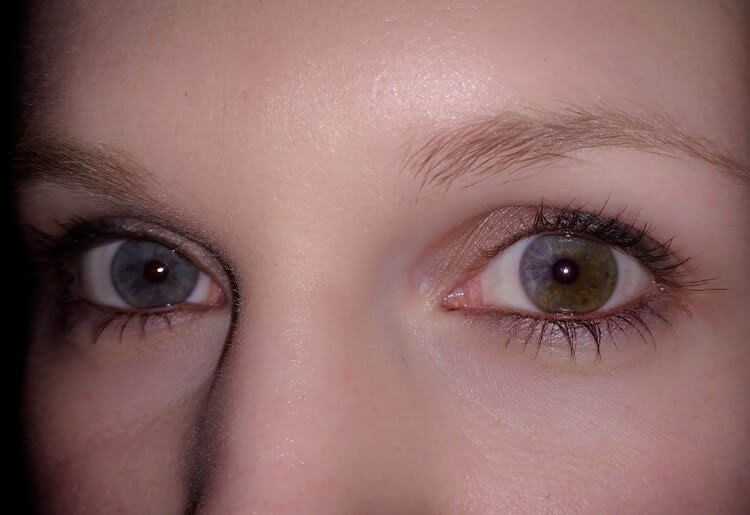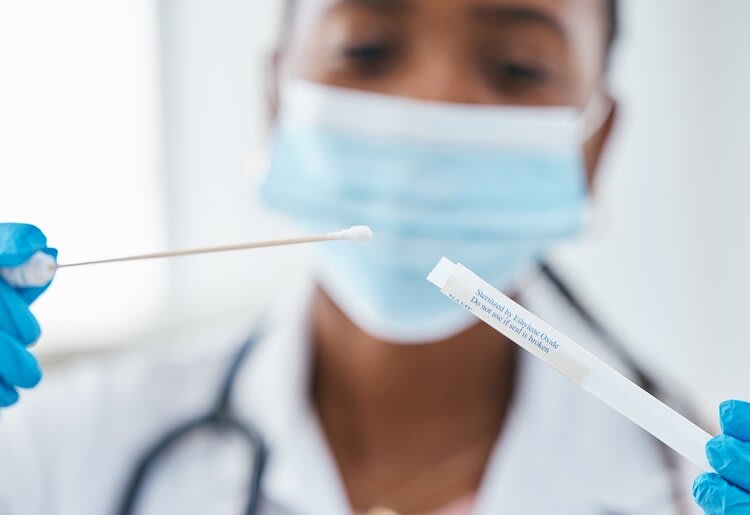In 2002, Lydia Fairchild, an American mother of two, was accused of fraud after she applied for government aid for her children in the state of Washington.
Why was she charged with this crime? Routine DNA tests revealed that she was not the biological mother of the children she gave birth to. But after a long legal battle and further maternity tests, Fairchild famously discovered that she didn't just have one set of DNA in her body: She had an entirely different one in her cervix, revealing her to be a chimera.
Upon this revelation, experts determined that only the DNA from her cervix was passed on to her children. This explained the genetic mismatch, as the original tests didn't include samples from this part of her body.
But how does it work? To answer this question, here are 10 things we learned from chimera DNA testing through Lydia Fairchild.
» What's in your DNA? Check out our top 10 picks for the best DNA testing kits and companies.
1. Chimeras Are Rare
Chimerism is a rare condition where two DNA sets are present within the same person, resulting in potential genetic mismatches between family members. This occurs when a person is born from two independently fertilized eggs that fused, including their DNA.
So far, there have only been 100 documented cases of chimerism in humans, which made it seem all the more likely that Fairchild tried to commit fraud. Luckily, she had pictures to prove that she was pregnant, gave birth, and subsequently raised her children herself, giving her crucial evidence to support her maternity case.
2. Signs Of Chimerism Are Difficult To Identify
This is what an "expected" case of chimerism looks like:
- Causes: Pregnancy, blood transfusion, or bone marrow transplants
- Symptoms: Presence of two or more sets of DNA in red blood cells and uneven skin pigmentation
Clearly, it's difficult to know if one has any of these characteristics of chimerism without intentional and specialized testing, which shows how tough it is to identify. In Fairchild's case, she showed none of these apparent signs until she needed government aid to raise her children after her divorce.
» Want an accurate DNA test? Try Living DNA.

3. Chimerism Can Be Diagnosed Unintentionally
Chimerism has little to no impact on daily life and is very hard to spot, so most people will never think to get tested for it. This means chimerism rarely ever gets diagnosed, and when it is, it's usually done so accidentally. As in the case of Fairchild, she could have lived her entire life completely unaware of her condition if she didn't need to prove maternity for governmental aid.
For example, imagine you (an undiagnosed chimera) need an organ transplant; you'd then need to take a blood test to check for donor matches. Since one of the classic signs of chimerism is the presence of more than one DNA set in red blood cells, you could then get test results that show genetic mismatches in your own body, prompting a chimerism diagnosis.
4. Chimerism Is Not A One Size Fit All
Expected symptoms of chimerism are highly specific and may include the following:
- Body asymmetry
- Eyes of different colors
- Hyperpigmentation or hypopigmentation on parts of the body
- Sexually ambiguous genitals
Fairchild was not believed to be a chimera early in her legal case since her causes and symptoms differed from expectations. Only the DNA of her cervix was passed on to her children, which is unusual for a chimera, making it all the more difficult to prove her diagnosis.
» More: Traits that can be tied to genetics.
5. Chimerism Can Happen To Anyone
Lydia Fairchild is not the only one with this one-in-a-million condition. While she was defending her biological relation to her children, another woman across the country received equally shocking news.
Karen Keegan needed a kidney transplant, and luckily, her children volunteered to donate one of these vital organs to her. But then, like Fairchild, she went through a crisis: Genetic tests revealed Keegan's children had not inherited any of her DNA.
To solve this medical puzzle, doctors collected samples from several parts of her body, including her blood, hair, and mouth. At first, they concluded that she was not biologically related to her children. But, only after testing Keegan's thyroid nodule tissue did they prove maternity, revealing her to be another chimera with more than one set of DNA.
6. You Can Be Your Own Twin
Fairchild was born with two different DNA sets, meaning she is a case of the famous "vanishing twin syndrome." This involves a pair of twins developing in the womb, with one dying midway through gestation. The living twin, the placenta, or the mother then absorbs the dead twin's genetic material.
While in her mother's womb, Fairchild absorbed the genetic material of her twin sibling, meaning she became her own twin!
If you lost your other twin in the womb, you should consider informing medical professionals if you were to do a DNA test. You may not have two different DNA profiles like Lydia Fairchild, but you could still technically be your twin if you absorbed them in the womb.
» More: Best sibling DNA tests.

7. Men Can Also Have Chimerism
Women aren't the only ones who can have chimerism. Fairchild's case of chimerism was that of a maternity (mother-child) dynamic; however, there have also been cases with a paternity (father-child) dynamic.
After his wife gave birth through fertility treatment, a father in Washington suspected that their fertility clinic had used the wrong sperm sample. A paternity test later revealed that he had an uncle-nephew relationship with his son rather than the usual father-son one. It turns out that his son inherited the genetic material of his dad's "hidden twin" cells (i.e., the DNA of his "unborn" twin brother), showing that men can also have chimerism.
8. Undetected Chimeras May Be Denied Child Support
Governmental aid may only be awarded to biological parents, as the legal definition of parentage defines it as being the person who provided the sperm or egg for the child to be born. This means that aid may be denied to non-biological parents (as in the case of Lydia Fairchild), even including child support (in divorce or contested paternity cases).
In a non-paternity action, the biological father can try to prove paternity to maintain legal ties with his child. So, supposing a father with undiagnosed chimerism takes a paternity test (despite knowing that he's the biological parent), he could lose the opportunity to be a part of his child's life with a negative DNA result.
» Want a DNA test for health screening? Try LetsGetChecked.
9. Chimerism Can Happen Through Pregnancy Or A Bone Transplant
Chimera DNA testing has revealed some interesting things about human biology. For example, you can become a chimera during your mother's pregnancy (like Fairchild). This can happen if one of your mother's egg cells is independently fertilized by two different sperm cells.
A bone marrow transplant is another way that a person can become a chimera. In this case, the donor's DNA will grow and replace the patient's DNA in the bone marrow, so, over time, the patient will have more of the donor's DNA than of their own.
10. DNA Tests Are Not 100% Reliable
Fairchild's chimerism interrogates the validity and reliability of traditional DNA tests that compare mouth, blood, and hair tissues for genetic compatibility, especially for family relationships, drug treatment, forensic medicine, and legal issues.
This case highlighted the need for more accuracy in DNA tests to avoid the emotional turmoil caused by false positives, such as Fairchild had to experience.

Bottom Line: Are You A Chimera?
Like the mythological Greek creature, human chimeras have two or more "entities" in their bodies, which is astounding. However, as Lydia Fairchild shows, human chimeras should be diagnosed before it's too late to avoid the potential heartache and sorrow it can cause, especially for parents with this condition.
If you suspect you have chimerism (or doubt your relation to your children), you should definitely try out one of the best at-home DNA paternity tests.
» More: These DNA tests revealed family secrets.

